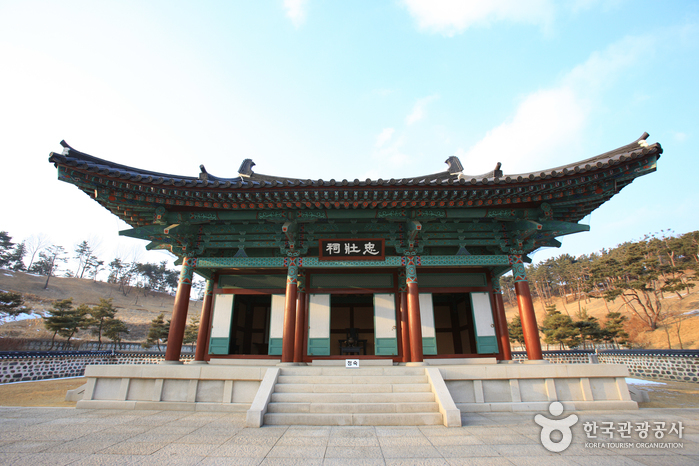Forêt récréative de Maninsan (만인산 자연휴양림)
19.7Km 2023-01-25
106, Sannae-ro, Dong-gu, Daejeon
La forêt récréative de Maninsan se situe à 17 km de la route nationale 17 depuis la gare de Seodaejeon, à la frontière entre la ville de Daejeon et Geumsan-gun, région Chungcheongnam-do.
Il s'agit d'une forêt récréative proche de la ville où l'eau claire coule dans la vallée et où s'étend une épaisse forêt de feuillus. Sur la crête, la forêt est divisée en une zone de villégiature familiale, une zone pour la jeunesse et une zone de pique-nique, ce qui en fait un agréable lieu de repos pour les citadins. L'aire de repos du mont de Maninsan est une installation construite avec des capitaux privés datant de l'année 1990. Au moment de la construction, la forêt a été préservéealors que la vallée naturelle a été utilisée telle quelle pour créer une installation technologique dans la vallée répartie sur 2 étages au-dessus du sol et 1 étage en sous-sol.
Devant l'aire de service, un étang a également été créé pour s'harmoniser avec le paysage naturel. Il s'agit d'une des plus belles aires de repos en Corée. C'est aussi le lieu de prédilection des citadins pour passer leur temps libre. Parmi les installations sur place, le pavillon Maninrugak constitue un bâtiment de loisirs célèbre sur le mont Maninsan. Bâtiment emblématique de Rujeong, ce pavillon adopte le style architectural de Segeomjeong au pied du mont Bugaksan à Séoul. Ce pavillon est un témoin de la beauté du style architectural traditionnel coréen.
Site historique du Général Gyebaek (계백장군 유적지)
19.9Km 2020-06-18
14, Sinpung-ri, Bujeok-myeon, Nonsan-si, Chungcheongnam-do
+82-41-746-8431
Gyebaek (? - 660) était un général de l’ancien royaume coréen de Baekje. Le site historique se trouve non loin de Hwangsanbeol, le dernier champ de bataille où le general Gyebaek est tombé en défendant Baekje lors de ses derniers jours. Les troupes alliées de Silla et de la Chine des Tang attaquèrent Tanhyeon et Baekgang, deux sites stratégiques tenus par Baekje en 660 (20ème année du règne du roi Uija). Le général Gyebaek et ses 5 000 soldats combattirent le général Kim Yu-Sin et ses 50 000 hommes. Le général Gyebaek vainquit par quatre fois ses ennemis, mais finit par succomber sous le nombre des soldats de l’armée adverse. L’armée de Baekje fut finalement vaincue, et Gyebaek, le dernier général de Baekje, tomba sur le champ de bataille.


 Français
Français
 한국어
한국어 English
English 日本語
日本語 中文(简体)
中文(简体) Deutsch
Deutsch Español
Español Русский
Русский